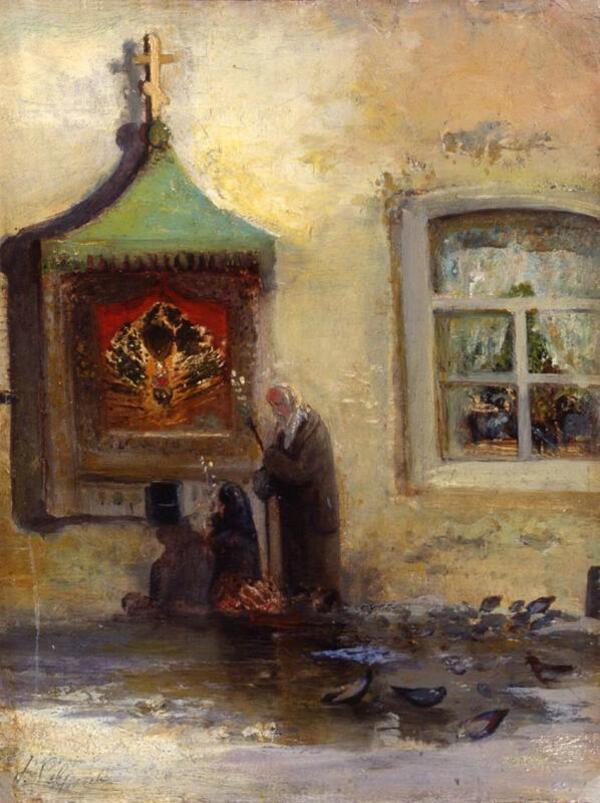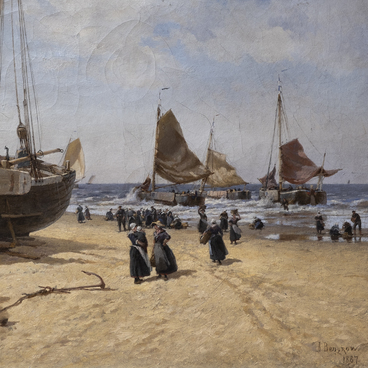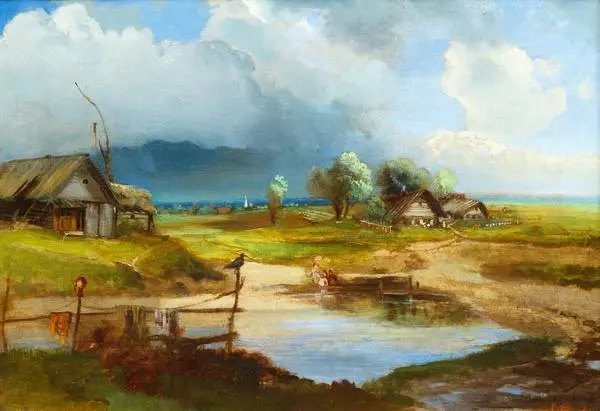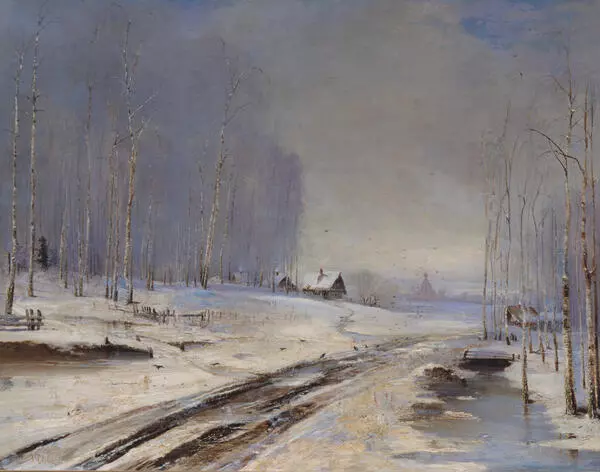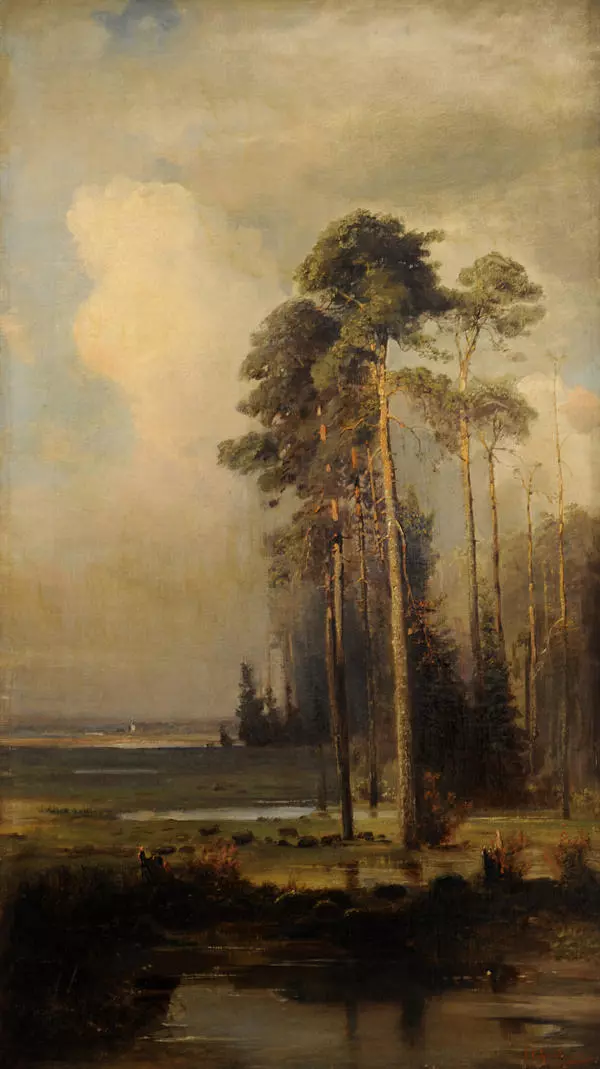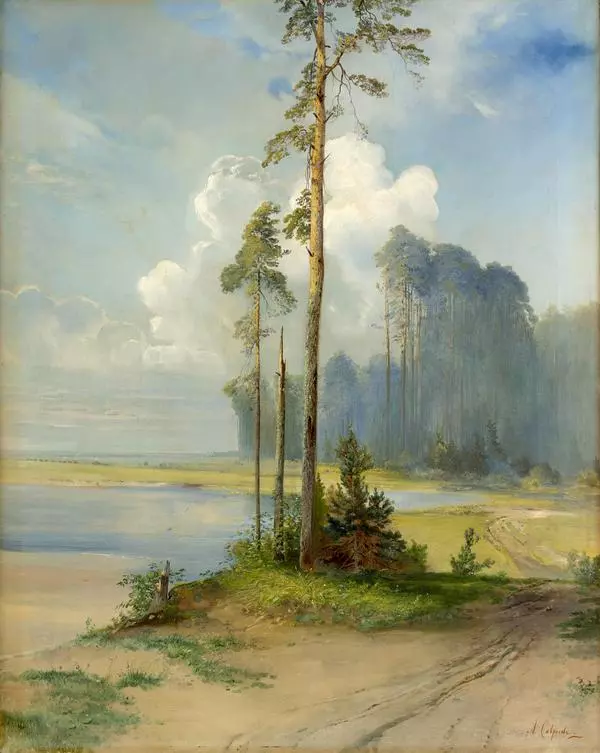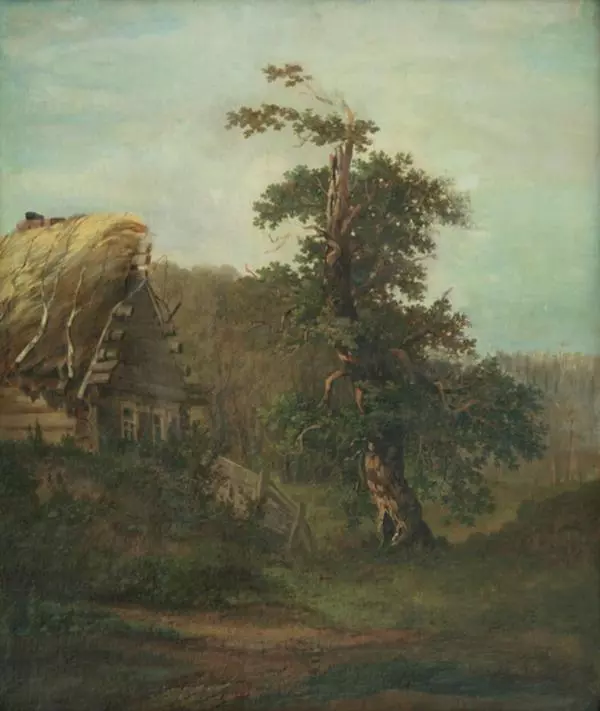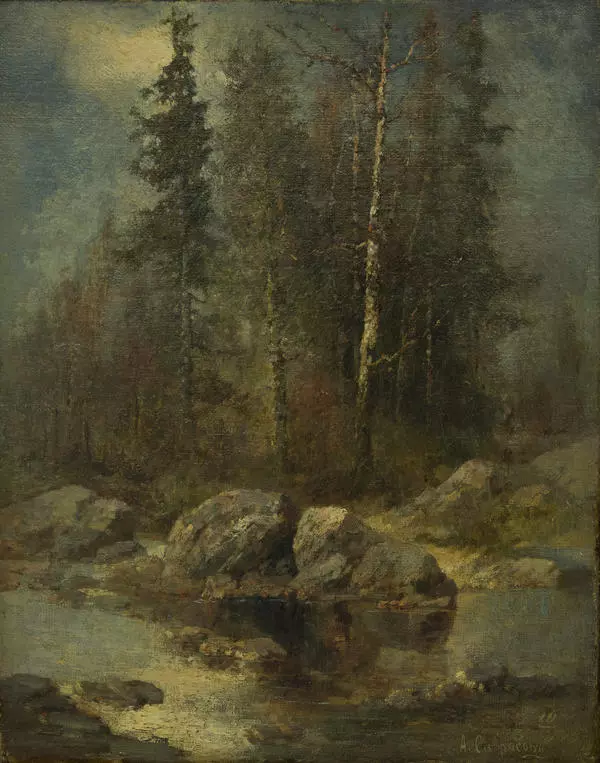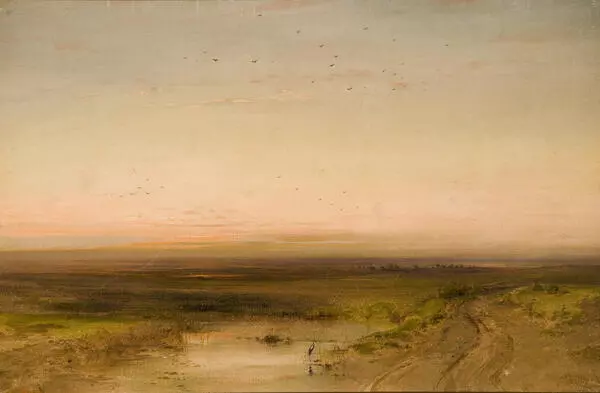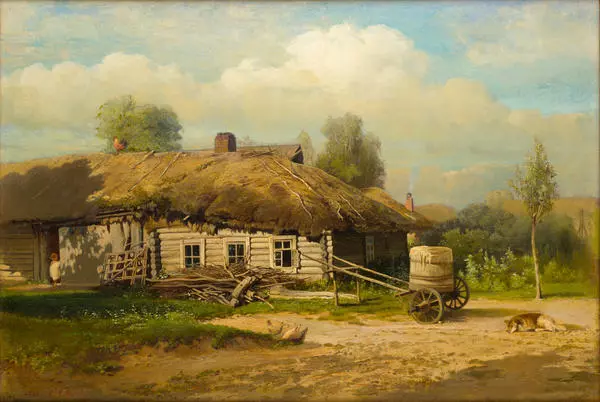The main exhibition of the Nizhny Tagil Museum of Fine Arts features the study “At the Icon. Praying to God” by Alexey Kondratyevich Savrasov. Despite having originated as a genre painting, this scene can be recognized among the artist’s masterpieces created out of love for nature.
In the study “At the Icon. Praying to God”, the artist provided a deeply emotional interpretation of a scene he accidentally witnessed on the street. Alexey Savrasov loved spring and painted the landscapes of this season with particular admiration. He was able to convey the unique and incomparable spring feeling in a mature and free manner. Although a genre scene is introduced into this painting, it is dissolved in the overall composition. The small world of this painting represents the painter’s great artistic achievements. The building’s yellow wall with pink, gray, and green reflections bears an icon case glowing brightly in the sun as if bursting into flames. Worshipers stand in front of it. At their feet, pigeons splash in a transparent puddle of melted snow. To depict the bright sunny day, the artist used a bright color palette and emphasized its uplifting mood. The most prominent color spots are accompanied by transparent shades of both warm and cool tones.
Alexey Savrasov had a unique life path. He was born
into a merchant family and started painting when he was still a child. At the
age of 14, Savrasov enrolled at the Moscow School of Painting, Sculpture and
Architecture even though his father was against it. At the age of 21, the young
artist painted his first masterpiece — “View of the Kremlin from the Krymsky
Bridge in Inclement Weather” — which at once earned him recognition and the
favor of Grand Duchess Maria Nikolaevna. Three years later, Alexey Savrasov
became a member of the Academy of Arts. He painted with all his heart, and his
landscapes were imbued with love, poignance, and fascination with Russian
nature. He introduced the genre of mood landscape in Russia. After his foreign
trip in 1862, Alexey Savrasov mostly lived and worked in Moscow. In 1871, he
co-founded the Society for Traveling Art Exhibitions and presented his famous
painting “The Rooks Have Returned” at the first exhibition of the Wanderers.

